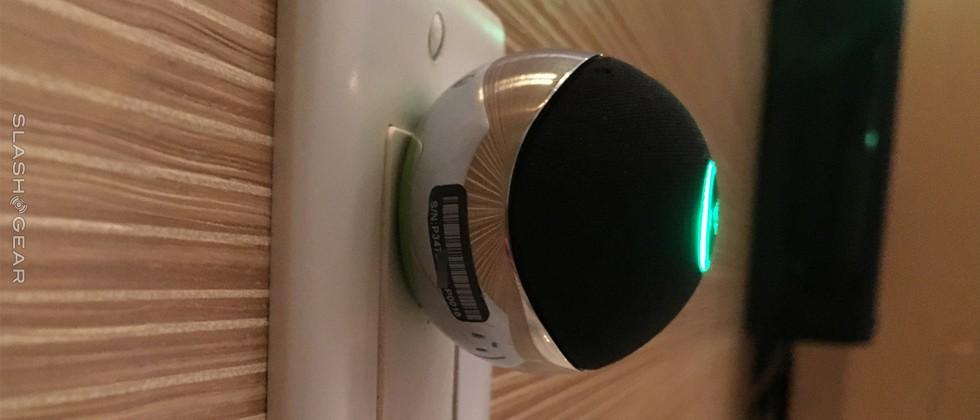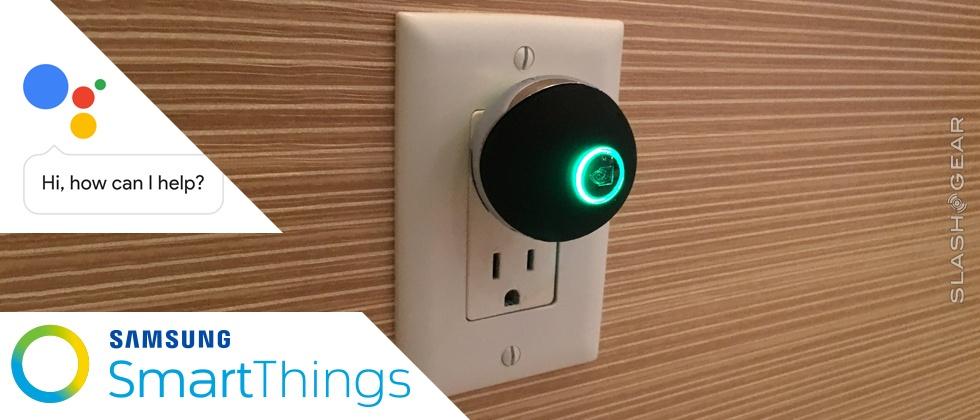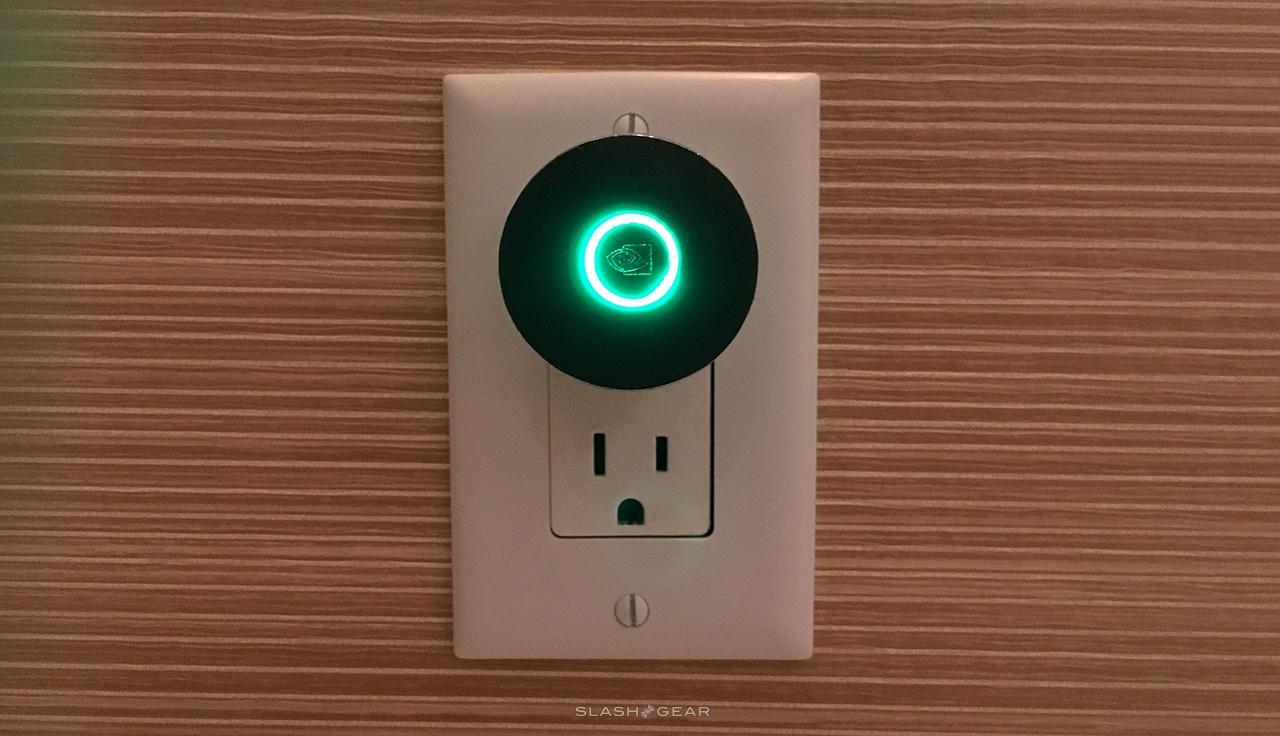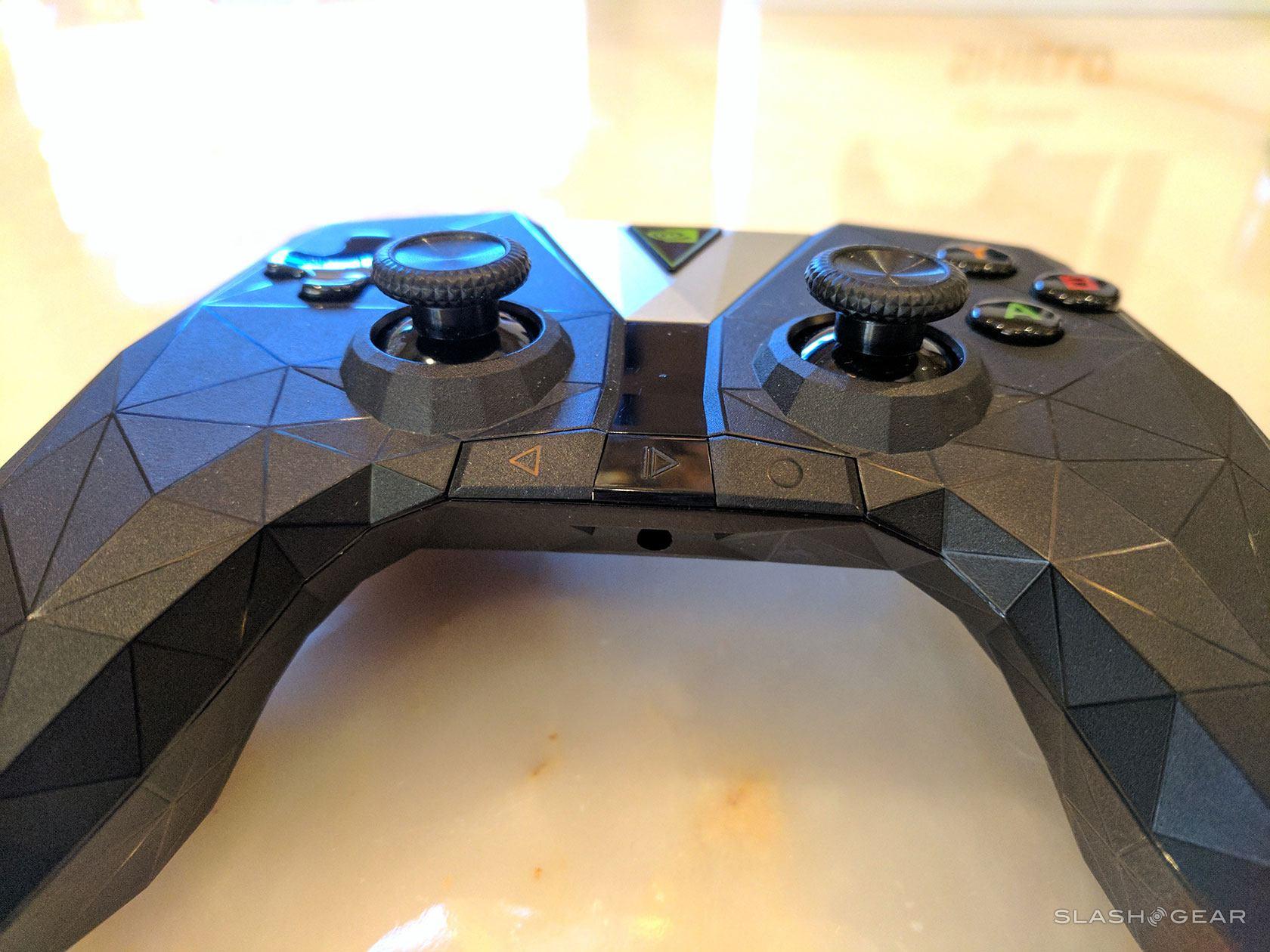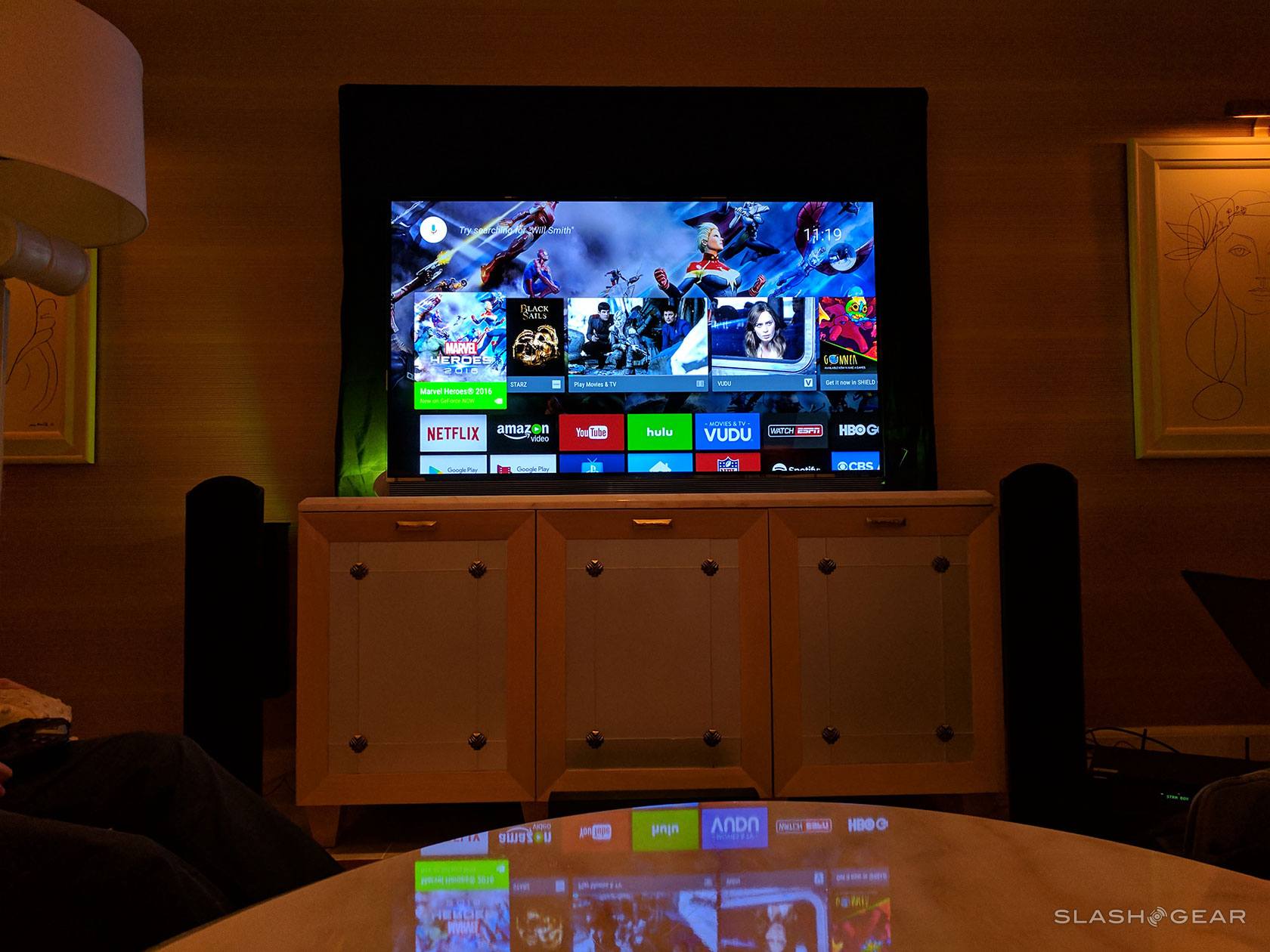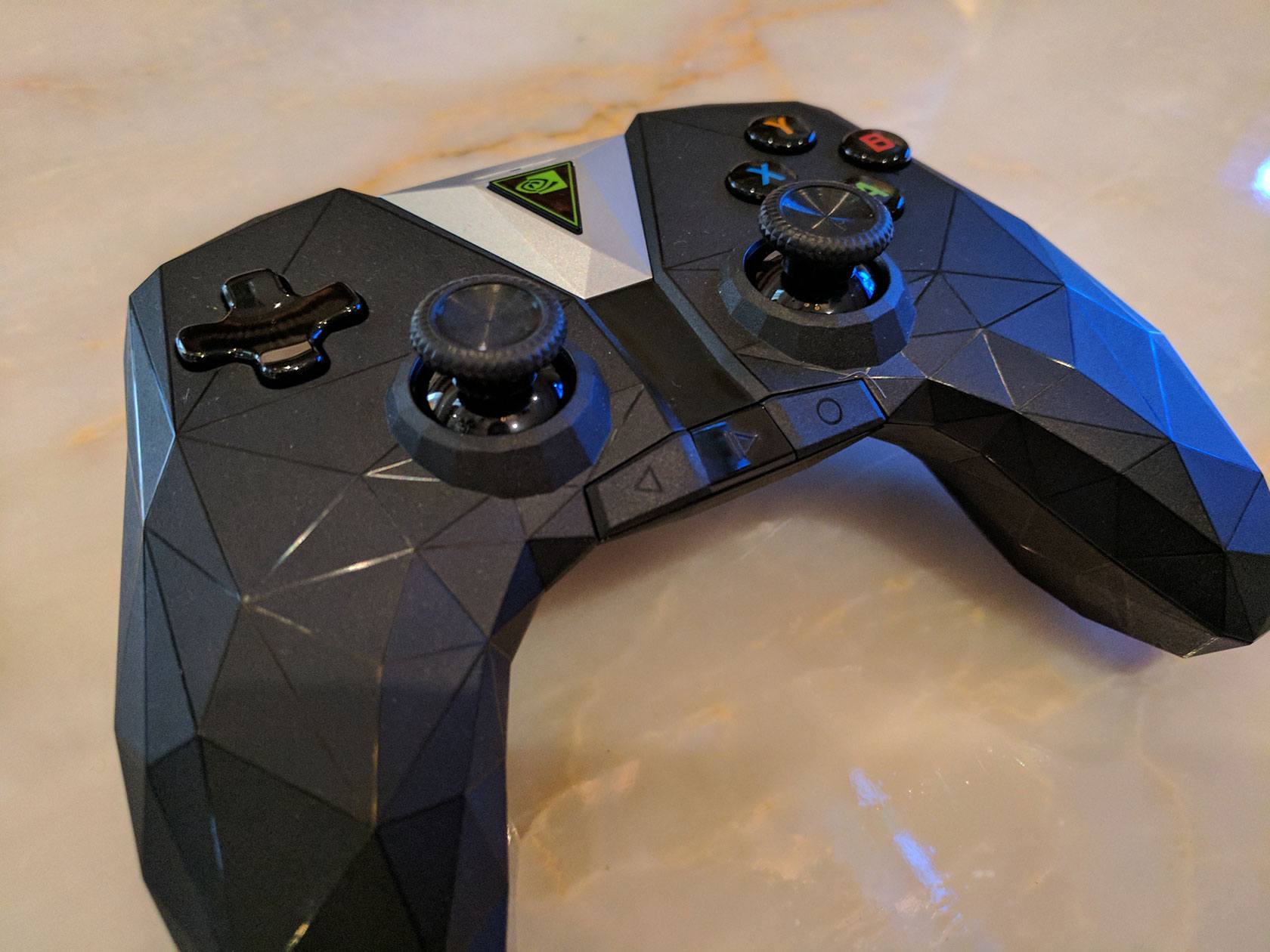NVIDIA SPOT Hands-On: This Is SHIELD's Smart Home
NVIDIA SHIELD has suddenly begun to look like a smart home master this week at CES 2017, adding Google Assistant and SmartThings to take the IoT in one swift stroke. For new users, all that's needed is the NVIDIA SHIELD TV device – it includes a standard TV remote and a gaming remote, both of which have microphones to accept voice commands. NVIDIA SPOT also has a microphone as well as a speaker, acting as an extension of the smart home functionality of NVIDIA SHIELD with Google Assistant and SmartThings connectivity.
In the below demonstration, our NVIDIA host shows one example of how NVIDIA SHIELD's smart home system works. Connected with SmartThings, Google Assistant responds to commands and turns on lights, activates a coffee pot, and changes the thermostat. The lights are Philips Hue and the thermostat is made by Nest. We also got a look at how the Nest app can show Nest Camera views on a TV screen.
SmartThings connectivity comes from a USB stick called SmartThings Extend. This USB device will connect to the back of the NVIDIA SHIELD and will need to stay connected in order to work with SmartThings devices. At this time we do not know the final release price of the SmartThings Extend.
NVIDIA SHIELD will be able to schedule all of this smart functionality as well. In addition to the abilities enabled with NVIDIA SHIELD's connection with SmartThings, all of Google Assistant's abilities available on new Android smartphones and tablets are available as well. The video below shows a few other things that can be done with Google Assistant – through NVIDIA SHIELD and on other devices like the Pixel.
While this NVIDIA SPOT unit isn't the one we relied on in our hands-on demonstration, it is as close as we're going to get before final production. This NVIDIA SPOT device is about the size of a golf ball and plugs into a standard wall socket (in the United States, that is – different plugs will be needed internationally). Once plugged in, each NVIDIA SPOT acts as an extension of the abilities of NVIDIA SHIELD.
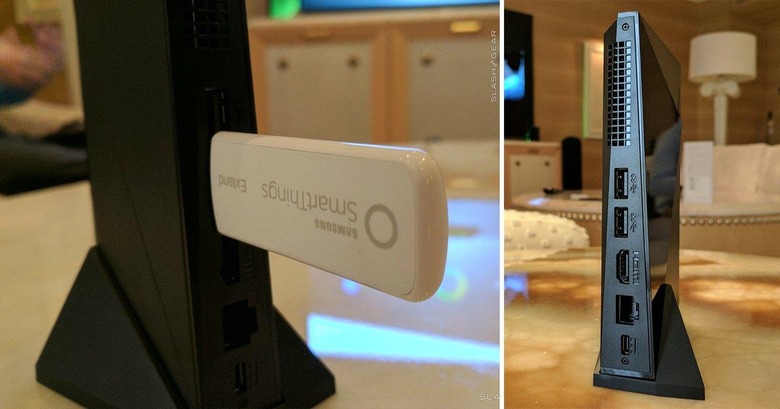
Each SPOT has a microphone and a speaker – or they will, when they're ready to roll later this year. For now our hands-on experience is really limited to what we can see here – and what we know about how sensitive microphones are on NVIDIA accessories for SHIELD in general. The mic sensitivity even in the past generation's controllers for NVIDIA SHIELD are well and above strong enough to pick up a voice saying "OK Google" across my living room.
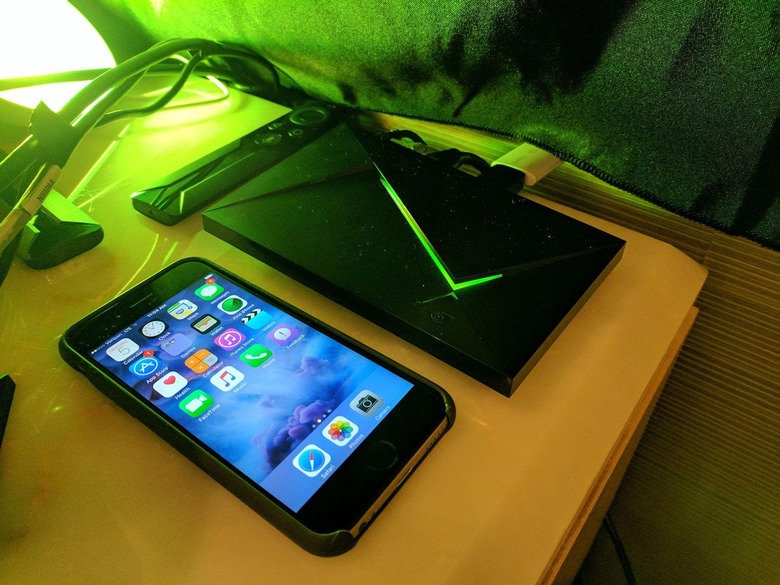
Unless NVIDIA does some drastic downgrading in microphone sensitivity with the SPOT between now and later this year, just one per room in a user's home should do just fine. We'll have to wait until review time to hear how loud the microphone is.
Each one of these SPOT devices will cost the user $50 USD, while the base NVIDIA SHIELD TV device (with a game controller and standard controller) will cost $200. Just so long as Wi-fi can reach each SPOT, we'll go ahead and assume (until NVIDIA confirms otherwise) that we'll be able to fill a tower full of SPOTs, all connected to the same SHIELD. NVIDIA suggests that the SPOT will be made available sometime soon – within the next few months, we hope.

